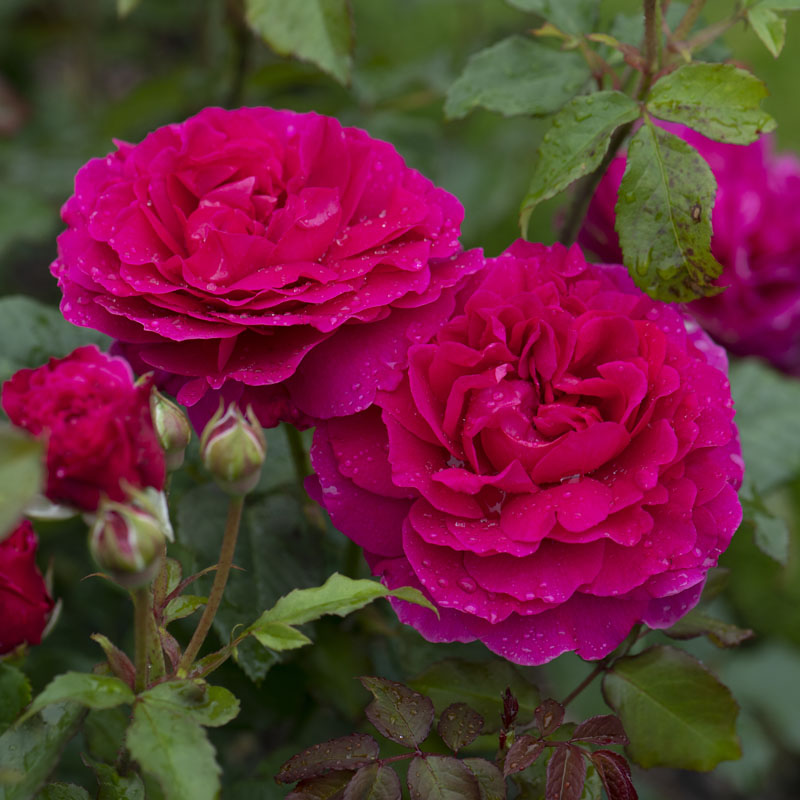Description
Rosa ‘Gabriel Oak’ is a charming David Austin rose, named after the character in Thomas Hardy’s novel ‘Far from the Madding Crowd’. This shrub rose grows up to 1.2m in height and produces medium-sized, double blooms in a soft shade of pink with a delicate fragrance reminiscent of old roses. The flowers are borne in clusters on sturdy stems, making them ideal for cutting and arranging. ‘Gabriel Oak’ has a bushy habit with glossy, dark green foliage that provides a handsome backdrop to the flowers. This rose blooms repeatedly throughout the growing season, providing a long-lasting display in the garden. It is disease-resistant and easy to grow, making it an excellent choice for both novice and experienced gardeners. For companion plants, consider pairing ‘Gabriel Oak’ with other roses, such as the white ‘Iceberg’ or the purple ‘Burgundy Ice’. It also looks lovely alongside lavender, catmint, and other cottage garden favorites.

















